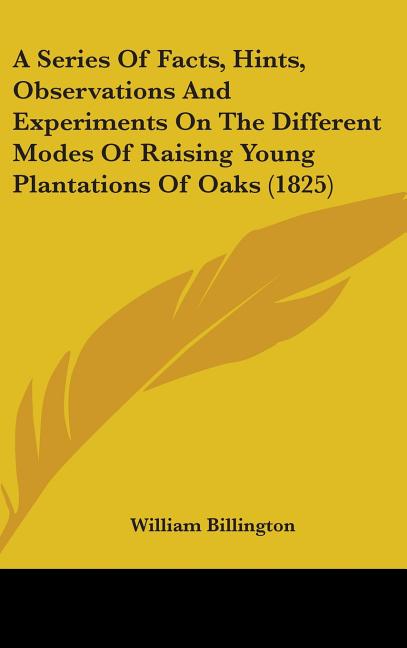1
/
of
1
Series Of Facts, Hints, Observations And Experiments On The Different Modes Of Raising Young Plantations Of Oaks (1825)
Series Of Facts, Hints, Observations And Experiments On The Different Modes Of Raising Young Plantations Of Oaks (1825)
Regular price
$48.95 USD
Regular price
$53.95 USD
Sale price
$48.95 USD
Unit price
/
per
Shipping calculated at checkout.
193 in stock
Couldn't load pickup availability
Descriptions
Descriptions
""A Series of Facts, Hints, Observations and Experiments on the Different Modes of Raising Young Plantations of Oaks"" is a book written by William Billington in 1825. The book is a comprehensive guide on how to raise young oak trees, covering various aspects such as soil preparation, planting techniques, and tree maintenance. Billington draws on his experience as a landowner and forest manager to provide practical advice and insights on the different methods of oak tree cultivation.The book is divided into several chapters, each focusing on a specific aspect of oak tree cultivation. The first chapter provides an overview of the different types of oaks and their characteristics, while the second chapter discusses soil preparation and the best conditions for growing oak trees. The subsequent chapters cover topics such as planting techniques, pruning, and tree care, including pest and disease management.Throughout the book, Billington emphasizes the importance of careful planning and attention to detail in raising young oak plantations. He provides detailed instructions on how to select the best planting sites, choose the right tree species, and ensure proper spacing and placement of trees. The book also includes numerous illustrations and diagrams to help readers visualize the various techniques and concepts discussed.Overall, ""A Series of Facts, Hints, Observations and Experiments on the Different Modes of Raising Young Plantations of Oaks"" is a valuable resource for anyone interested in oak tree cultivation, from landowners and forest managers to amateur gardeners and nature enthusiasts.This scarce antiquarian book is a facsimile reprint of the old original and may contain some imperfections such as library marks and notations. Because we believe this work is culturally important, we have made it available as part of our commitment for protecting, preserving, and promoting the world's literature in affordable, high quality, modern editions, that are true to their original work.
Share

